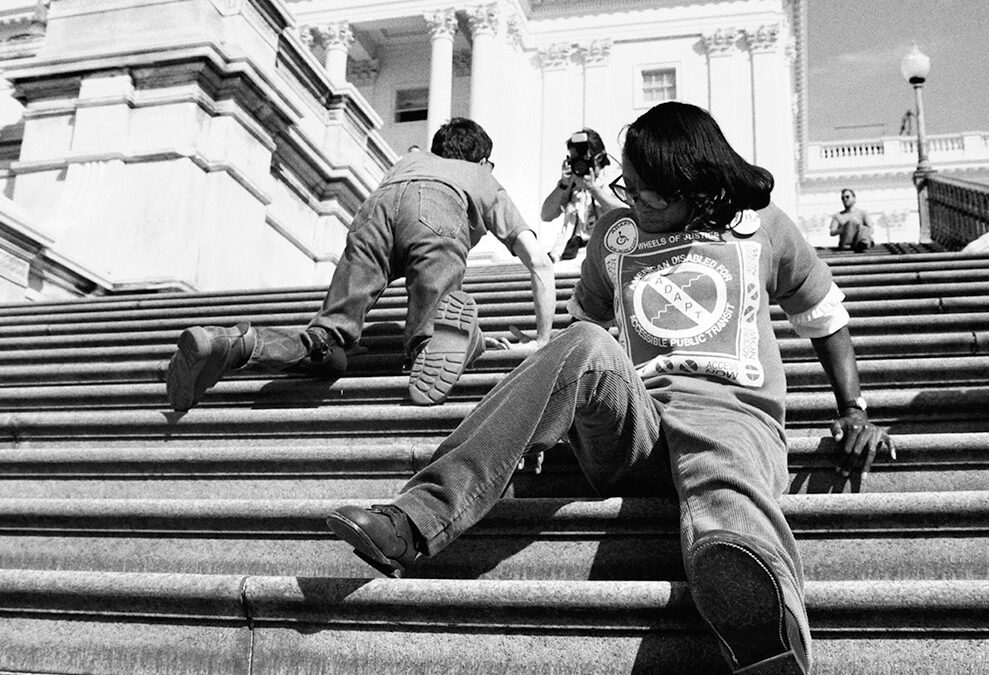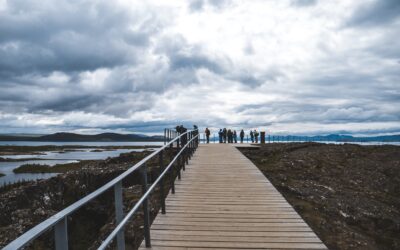Photo via Los Angeles Department on Disability website.
On March 12, 1990, a group of disability rights activists did something unforgettable: they left their wheelchairs and mobility aids to crawl up the 83 steps of the U.S. Capitol. This bold move, known as the Capitol Crawl, was a game-changer in the fight for the Americans with Disabilities Act (ADA). But beyond the headlines, there are stories and facts that many might not know. Let’s dive into some of these lesser-known aspects:
Diverse Voices Came Together
The Capitol Crawl wasn’t just a spontaneous act; it was the result of years of advocacy by groups like ADAPT (Americans Disabled for Accessible Public Transit). Founded in 1983, ADAPT initially focused on making public transit accessible but soon expanded its mission to broader disability rights issues. Their strategy of non-violent direct action set the stage for impactful protests like the Capitol Crawl.
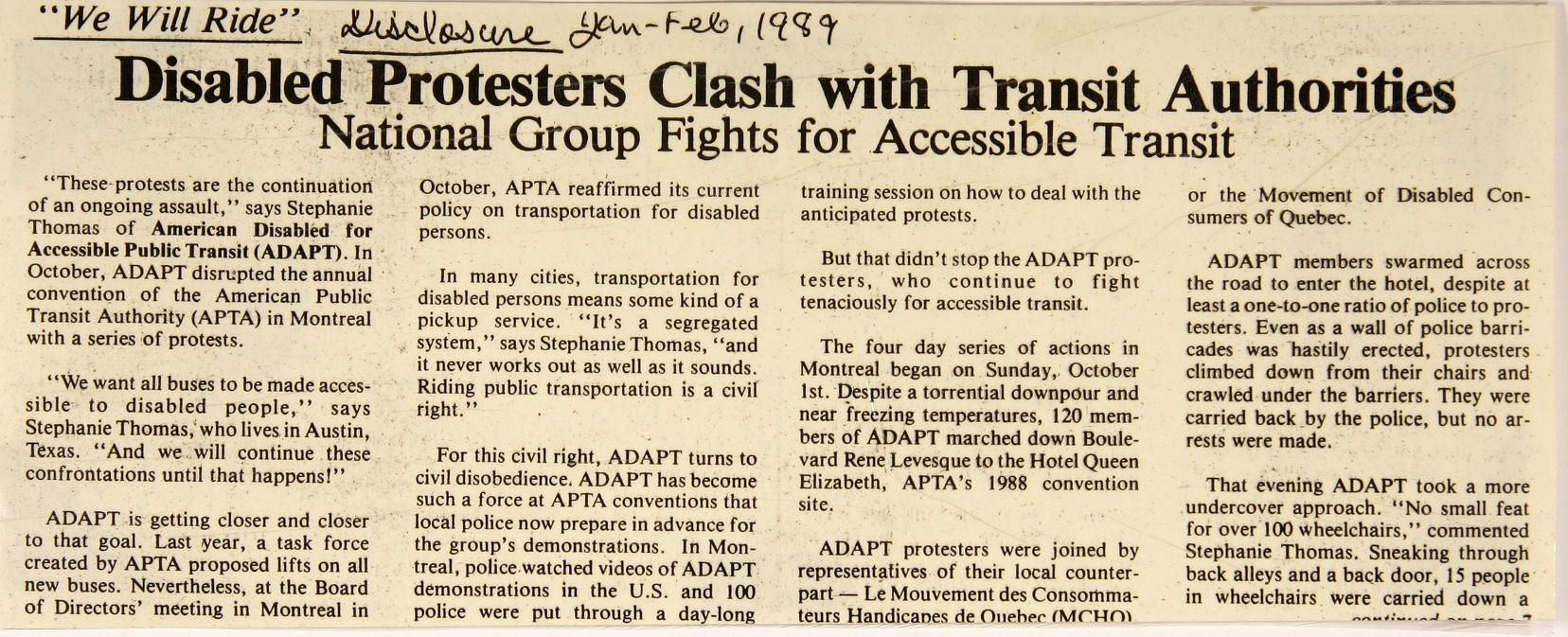
Photo from Adapt Museum Gallery.
The People Who Made It Happen
Behind the scenes, many individuals played crucial roles in organizing and executing the protest. Activists like Mike Auberger, Stephanie Thomas, and Bob Kafka were important in coordinating the event, ensuring that the demonstration would gain national attention. Their efforts, along with countless others, showcased the collective strength of the disability community.
While many remember eight-year-old Jennifer Keelan-Chaffins pulling herself up the steps, fewer know that she had been an activist for years. Starting her advocacy journey at just six, Jennifer’s participation highlighted the involvement of young voices in the movement. Her determination became a symbol of the relentless push for equal rights.
Below is a photo of an ADAPT protest in Los Angeles, Mike Auberger and Bob Kafka chained by the neck to a revolving door.
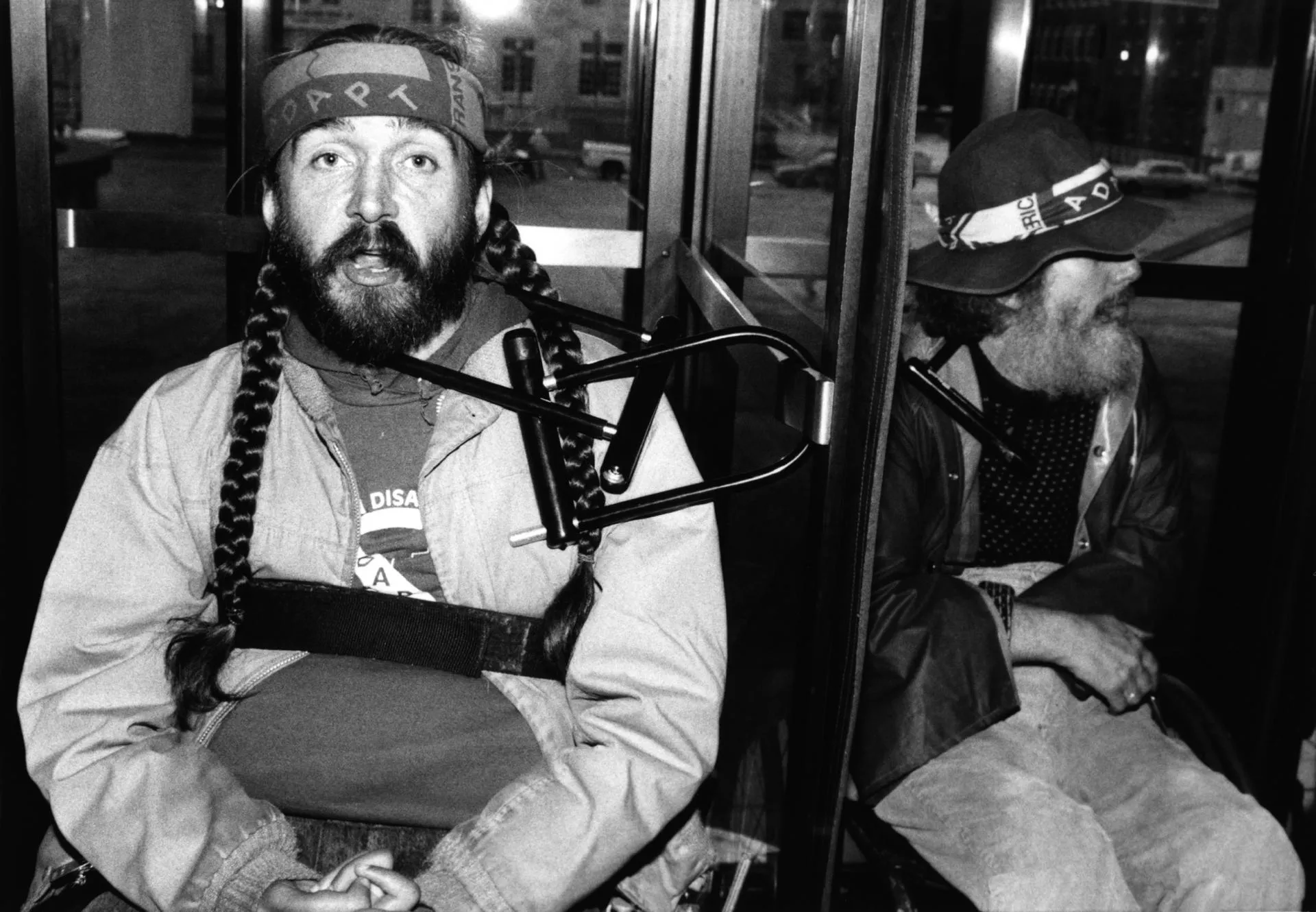
Photo and image description via Los Angeles Department on Disability website.
Impact
The Capitol Crawl wasn’t without consequences. Over 100 activists were arrested during the protests that week, drawing significant media attention. This coverage played a pivotal role in determining public opinion and pressuring lawmakers to take serious action. Four months later, on July 26, 1990, the ADA was signed into law marking a monumental victory for disability rights advocates.
The image below is hundreds of disability rights advocates and activists as they descend on the Capitol’s Hoyer Rotunda, chanting and pushing for the ADA signing, among them in the picture, Lillibeth Navarro, Gary Bosworth, etc.
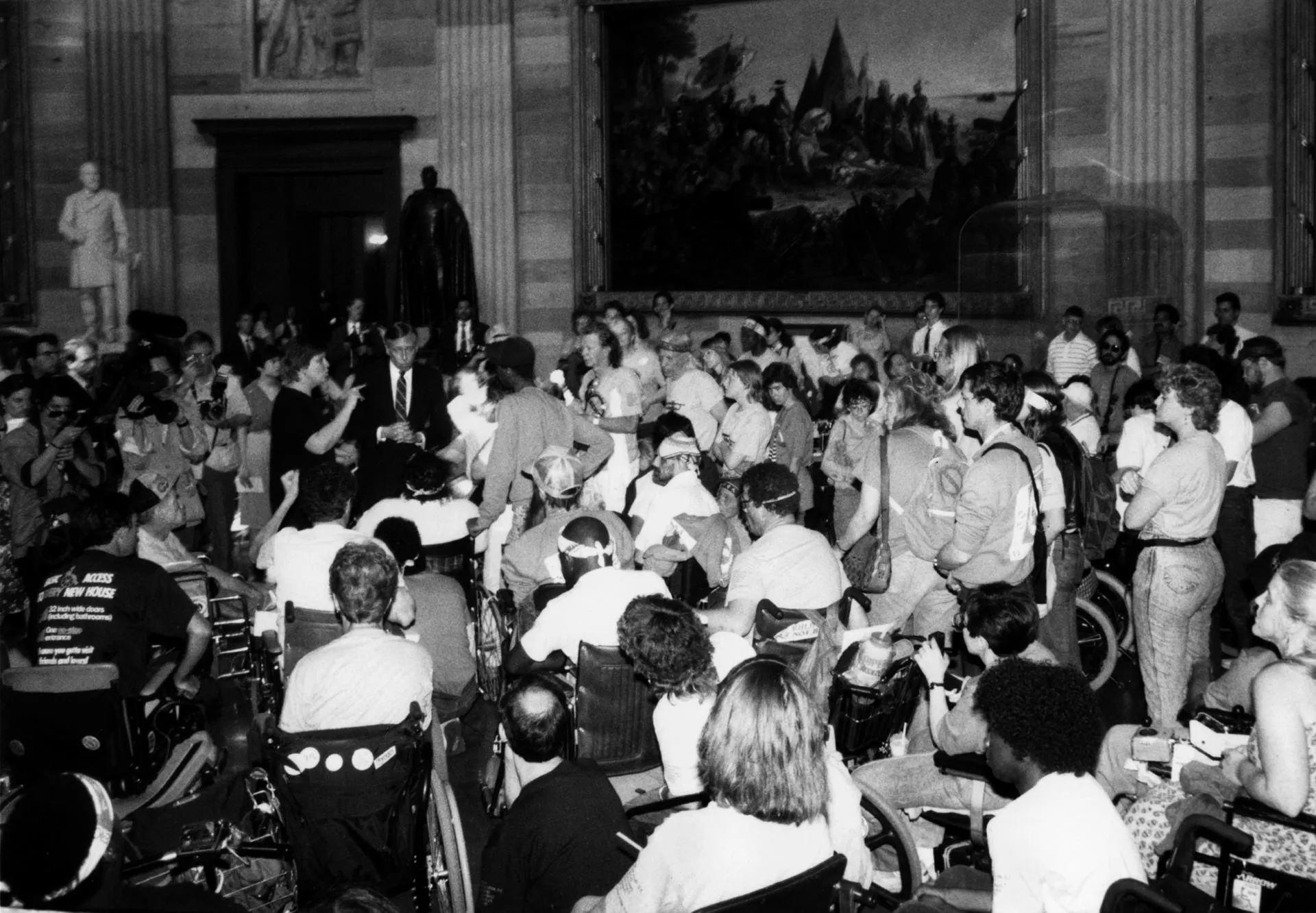
Photo and image description via Los Angeles Department on Disability website.
Voices from the Crawl
To really understand the impact of the Capitol Crawl, hearing from those who were actually there is invaluable. Here are some stories to learn from:
Crawling Across the Frontier: The Capitol Crawl of 1990
This documentary provides an in-depth look at the events leading up to, during, and after the Capitol Crawl, featuring interviews with key participants.
Let’s Learn About the Capitol Crawl of 1990 with Jennifer Keelan-Chaffins Disability Rights Icon
In this interview, Jennifer Keelan-Chaffins reflects on her experiences during the Capitol Crawl and discusses the ongoing fight for disability rights.
How the ADA Changed the Built World | Crip Cramp | Netflix
In this video, we hear from iconic disability activists sharing how the American with Disabilities Act (ADA) transformed the built environment, making public spaces more accessible while highlighting the ongoing fight for disability rights.
So what now?
The Capitol Crawl serves as a powerful reminder of what determination and unity can achieve. By understanding and sharing these stories, we honor the legacy of those who crawled so that future generations could stand tall.
As we reflect on this history, we also recognize that the work isn’t done. Accessibility and disability rights continue to be fought for literally every day. Today, we’re still seeing barriers, both physical and societal, that don’t allow people with disabilities to have their needs met. In some cases, the very rights and protections that were worked so hard towards are now under threat.
But here’s the thing – we’re not going back. The fight for inclusion, belonging, equality, and accessibility is far from over. It’s up to us to stay the course, to keep pushing forward with the same strength, unity, and determination that fuelled the Capitol Crawl. As a community, it’s essential that we continue to advocate for change, challenge injustices, and live our lives unapologetically.
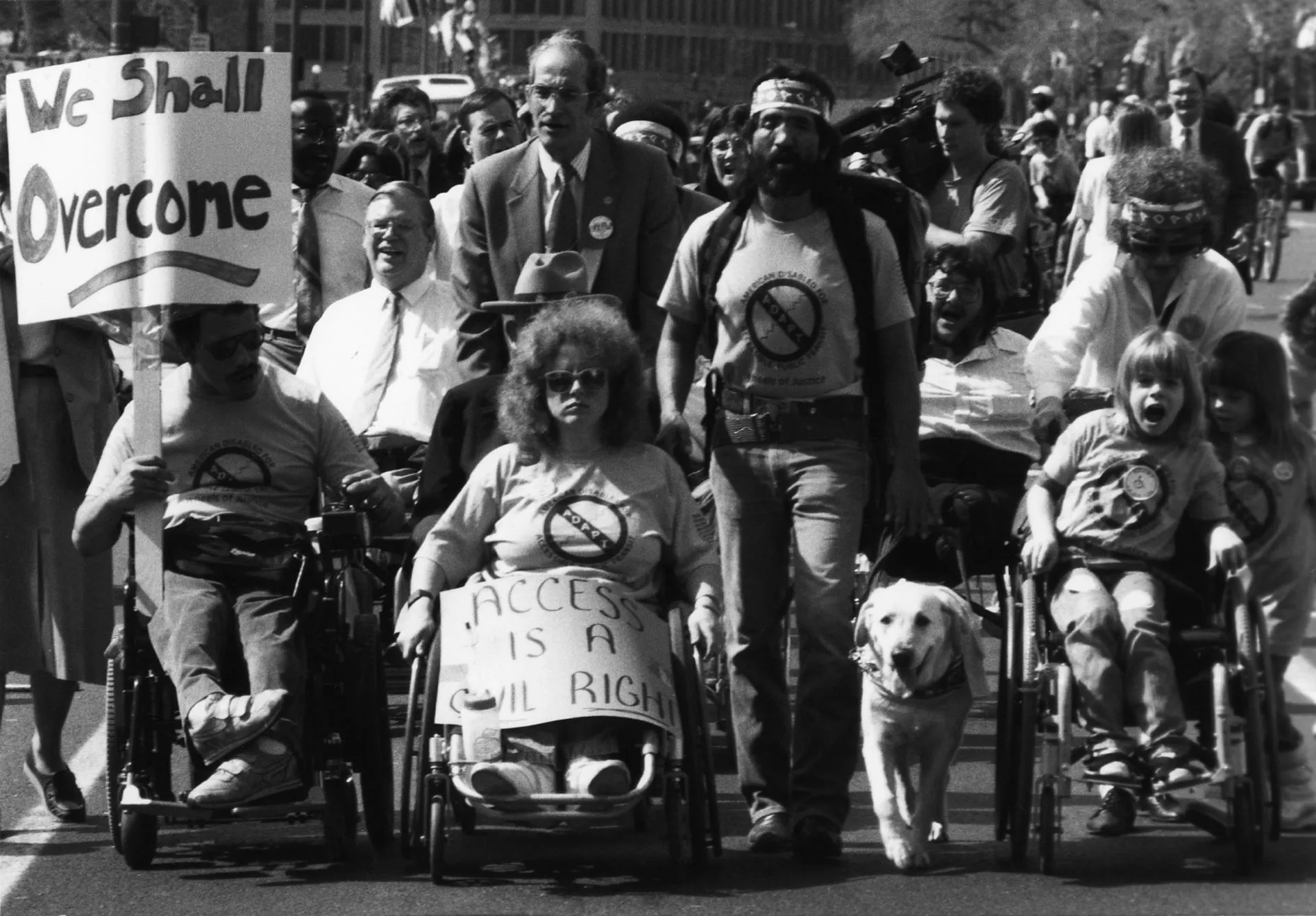
Photo and image description via Los Angeles Department on Disability website.
So, what’s next? How will we keep pushing for change? For us, the answer is simple: together, we keep moving forward. We remind the world that the rights of people with disabilities are not optional, and the movement is just getting started.
Resources:
- https://griid.org/2013/03/14/this-day-in-resistance-history-activists-arrested-in-protest-for-the-americans-with-disabilities-act-in-1990/
- https://www.history.com/news/americans-with-disabilities-act-1990-capitol-crawl
- https://newmobility.com/the-capitol-crawl/
Related AccessOutdoors Articles
Discover Accessible Fort Lauderdale
When I set off for a three-day trip to Fort Lauderdale, I wasn’t just seeking a relaxing getaway - I was on a mission to understand and see the city’s parks and attractions from an accessibility standpoint. As a seasoned traveller and manual wheelchair user, I've...
Discover the World’s Most Stunning Accessible Trails
Photo by Rudimencial via iStock.Accessible trails are important to ensure everyone can enjoy the beauty of nature. There are many different accessible trails and parks to explore around the world, suitable for a variety of mobility needs. From mountainsides to...
Discovering History at Boston Common
Boston is a city where history comes alive, and at the heart of it all is Boston Common, the oldest public park in America, established in 1634. Over the centuries, it has transformed from a colonial pasture to a peaceful green space, offering visitors a chance to...

